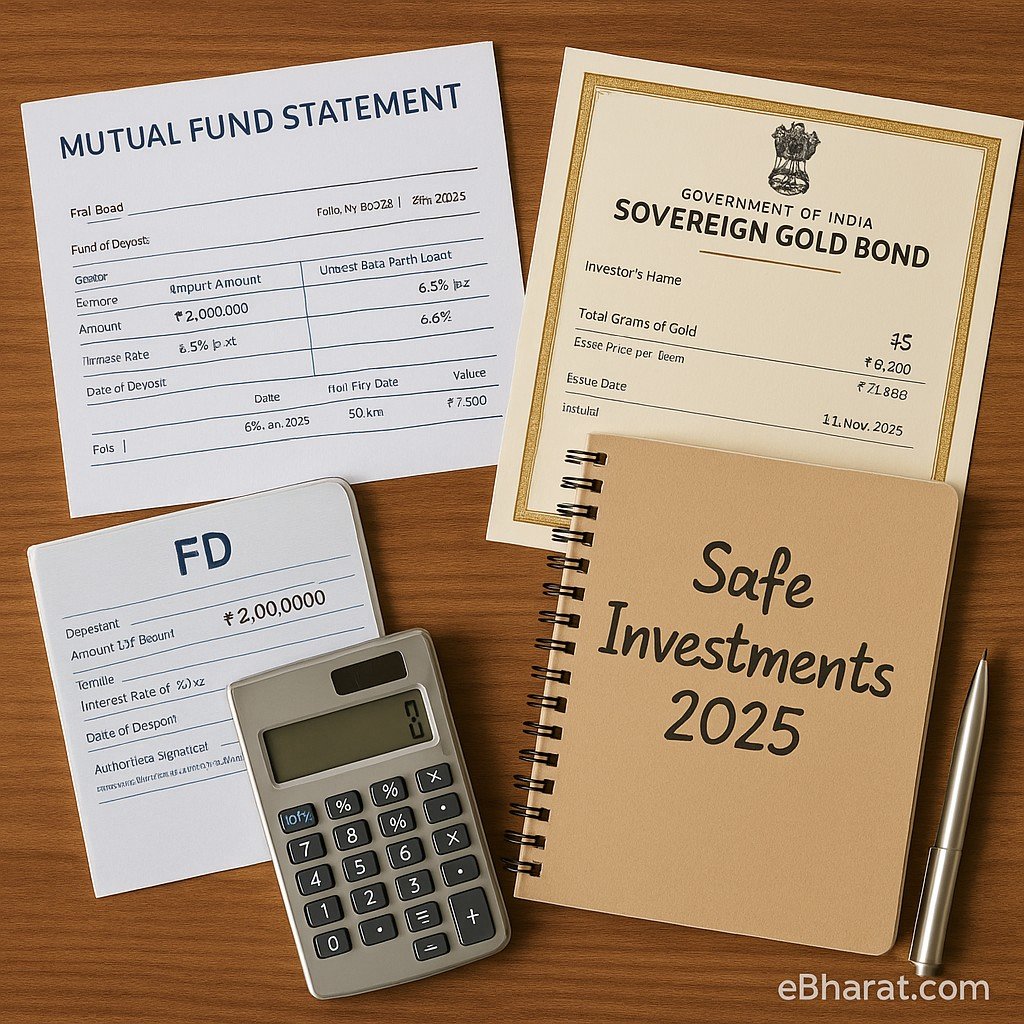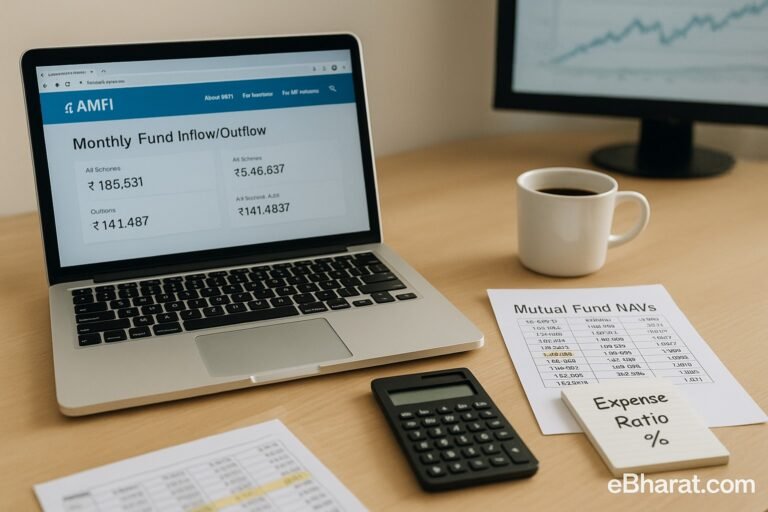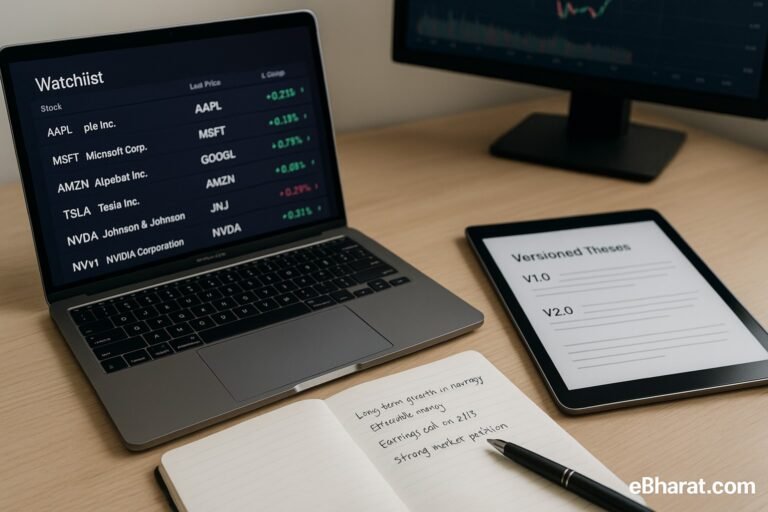
Not every investor wants to chase high-risk returns from equities, cryptos, or derivatives. Many prefer traditional, safer instruments where the focus is capital protection + stable income.
In India, three popular safe alternatives are:
- Fixed Deposits (FDs)
- Debt Mutual Funds (Debt MFs)
- Sovereign Gold Bonds (SGBs)
Let’s understand how they work, their returns, taxation, and which suits you in 2025.
Fixed Deposits (FDs)
What They Are
- Offered by banks and NBFCs.
- You deposit a lump sum for a fixed tenure (6 months – 10 years).
- Earn guaranteed interest (5–7.5% typically).
Benefits
- Safe → Covered under DICGC insurance up to ₹5 lakh.
- Fixed returns, no market risk.
- Senior citizens get extra 0.25–0.50% interest.
Limitations
- Fully taxable at your slab rate.
- Returns often just above inflation.
- Premature withdrawal penalties.
Example
Invest ₹5 lakh in a 1-year FD @ 7% → You get ₹35,000 interest. If you’re in the 30% tax slab, after tax you net ~₹24,500.
Debt Mutual Funds (Debt MFs)
What They Are
- Mutual funds that invest in bonds, G-Secs, corporate papers.
- Types: Liquid funds, gilt funds, corporate bond funds.
Benefits
- Better liquidity vs FDs (redeem any time).
- Potentially higher returns (6–8%).
- Professional management + diversification.
Limitations
- Returns not guaranteed (NAV depends on interest rates).
- Some credit/default risk in corporate bond funds.
- Taxation (Post April 2023 law):
- No LTCG indexation.
- All gains taxed at slab rate (like FDs).
Example
Invest ₹2 lakh in a liquid debt MF. NAV rises 6% in a year → ₹12,000 profit. If you’re in 20% slab, post-tax you keep ~₹9,600.
Sovereign Gold Bonds (SGBs)
What They Are
- Government-backed bonds linked to gold price.
- Issued by RBI in tranches (8-year maturity, early exit after 5 yrs).
- Pay 2.5% interest yearly + gold price appreciation.
Benefits
- Safer than physical gold (no making charges, storage issues).
- Accepted as loan collateral by banks.
- Tax advantage: No capital gains tax if held till maturity.
Limitations
- Locked in for 8 years (liquidity issue).
- Interest taxable at slab rate.
- Secondary market liquidity is low.
Example
Buy 10g SGB at ₹6,000 = ₹60,000.
- Annual interest = ₹1,500 (taxable).
- After 8 years, if gold = ₹8,000/g, redemption = ₹80,000 (capital gain tax-free).
Comparison Table
| Feature | FDs | Debt MFs | SGBs |
|---|---|---|---|
| Safety | Very high (DICGC insured) | Moderate (market-linked) | Very high (Govt-backed) |
| Returns | 5–7.5% fixed | 6–8% variable | Gold price + 2.5% interest |
| Liquidity | Premature withdrawal with penalty | High (redeem any time) | 8 years (exit after 5 yrs / secondary market) |
| Taxation | Slab rate, TDS above ₹40k | Slab rate (no LTCG indexation post 2023) | Interest taxable; redemption gains tax-free |
If you want low-risk, stable returns, these traditional options are best:
- FDs → for guaranteed, short-term safety.
- Debt MFs → for flexibility & slightly better returns.
- SGBs → for long-term wealth + gold exposure.
Each has its place. Conservative investors should allocate across all three depending on liquidity and tax needs.
Build a Safe & Balanced Portfolio
Compare safe instruments and explore our detailed guides on FDs, SGBs, and Debt MFs.












